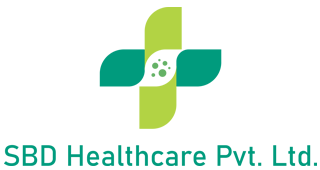Physical & Chemical Properties:
| CAS No | 100986-85-4 |
| Mol Weight | 361.368 g/mol |
| Boiling Point | 571.5 °C |
| Melting Point | 225-227° (Dec) |
| Molecular Formula | C18H20FN3O4 |
| Solubility | 1 M NaOH: soluble50mg/m |
| Color | Colorless needles from ethanol |
What is Levofloxacin?
Levofloxacin is a fluoroquinolone (flor-o-KWIN-o-lone) antibiotic that fights bacteria in the body.
Levofloxacin is used to treat bacterial infections of the skin, lungs, prostate, or urinary tract (bladder and kidneys). Levofloxacin is also used to treat pelvic inflammatory disease and Chlamydia and/or gonorrhea.
Fluoroquinolone antibiotics can cause serious or disabling side effects that may not be reversible. Levofloxacin should be used only for infections that cannot be treated with a safer antibiotic. Levofloxacin may also be used for purposes not listed in this medication guide.
Before taking this medicine:
You should not use this medicine if you are allergic to Levofloxacin or other fluoroquinolones (ciprofloxacin, Gemifloxacin, ofloxacin, moxifloxacin, norfloxacin, and others).
Levofloxacin may cause swelling or tearing of a tendon (the fibber that connects bones to muscles in the body), especially in the Achilles' tendon of the heel. This can happen during treatment or up to several months after you stop taking Levofloxacin. Tendon problems may be more likely in certain people (children and older adults, or people who use steroid medicine or have had an organ transplant).
Tell your doctor if you have ever had:
Levofloxacin side effects:
Get emergency medical help if you have signs of an allergic reaction (hives, difficult breathing, swelling in your face or throat) or a severe skin reaction (fever, sore throat, burning in your eyes, skin pain, red or purple skin rash that spreads and causes blistering and peeling).
Levofloxacin can cause serious side effects, including tendon problems, side effects on your nerves (which may cause permanent nerve damage), serious mood or behaviour changes (after just one dose), or low blood sugar (which can lead to coma).
Stop taking this medicine and call your doctor at once if you have:
In rare cases, Levofloxacin may cause damage to your aorta, the main blood artery of the body. This could lead to dangerous bleeding or death. Get emergency medical help if you have severe and constant pain in your chest, stomach, or back.
Also, stop using Levofloxacin and call your doctor at once if you have:
How to use Levofloxacin?
Read the Medication Guide provided by your pharmacist before you start taking Levofloxacin and each time you get a refill. If you have any questions, ask your doctor or pharmacist.
Take this medication by mouth with or without food as directed by your doctor, usually twice a day (every 12 hours). The dosage and length of treatment is based on your medical condition and response to treatment. Drink plenty of fluids while taking this medication unless your doctor tells you otherwise. Take this medication at least 2 hours before or 2 hours after taking other products that may bind to it, decreasing its effectiveness. Ask your pharmacist about the other products you take. Some examples include: quinapril, sucralfate, vitamins/minerals (including iron and zinc supplements), and products containing magnesium, aluminum, or calcium (such as antacids, didanosine solution, calcium supplements).For the best effect, take this antibiotic at evenly spaced times. To help you remember, take this medication at the same time(s) every day. Continue to take this medication until the full prescribed amount is finished, even if symptoms disappear after a few days. Stopping the medication too early may result in a return of the infection. Tell your doctor if your condition persists or worsens.
What is the reaction of Levofloxacin?
Serious skin reactions can occur with this medicine. Check with your doctor right away if you have blistering, peeling, or loosening of the skin, red skin lesions, severe acne or skin rash, sores or ulcers on the skin, or fever or chills while you are using this medicine.
What is the work of Levofloxacin in the body?
Levofloxacin is a fluoroquinolone (flor-o-KWIN-o-lone) antibiotic that fights bacteria in the body. Levofloxacin is used to treat bacterial infections of the skin, lungs, prostate, or urinary tract (bladder and kidneys). Levofloxacin is also used to treat pelvic inflammatory disease and Chlamydia and/or gonorrhoea.
Mode of Action:
Levofloxacin is a broad-spectrum antibiotic that is active against both Gram-positive and Gram- negative bacteria. It functions by inhibiting two bacterial type II topoisomerases, DNA gyrase and topoisomerase IV.Topoisomerase IV is an enzyme necessary to separate (mostly in prokaryotes, in bacteria in particular) replicated DNA, thereby inhibiting bacterial cell division.

We're established as one of the leading active pharmaceutical ingredients API's manufacturers and suppliers in India.